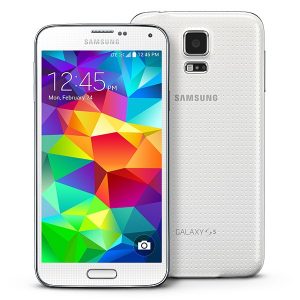Bells and whistles for augmenting market share
‘Bells and whistles’ is marketing term which is used to describe products or items that have a full array of additional features added for augmenting sales. Electronic products such as mobile phones and computers come with added features, even cars come with extra features. The phrase originated in the field of electronics and cars. The earliest reference found to the meaning of the phrase ‘bells and whistles’ is in a classified advertisement for a 1969 Buick Riviera, in the Wisconsin newspaper The Capital Times, in June 1971. But it is worth noting that in 18th and 19th century the phrase was used to describe fire engines, the Salvation Army, circuses anyone in fact that was trying to draw attention to themselves using a bell or a whistle.
Marketers add lot of unwarranted features sometimes to a product to make it ‘look better’ this is termed as ‘bells and whistles’ in marketing which can be described as added force which might be barely different or improved version of a product on the captive customers who have invested considerable amount of money and time on the product. Over the centuries the aim of bells and whistles have been to attract attention, to communicate to gain a competitive edge by the marketers. More recently, the term bells and whistles is typically credited to additional features, features that differentiate, facilities needed in special circumstances and to additions that make things more commercially attractive. Nothing has changed as Bells and Whistles still accomplishes all these aims by defining, developing and establishing competitive edge through innovative and effective communication solutions.
Bells and whistles phrase goes well with product differentiation. It is used in reference of how a marketer “differentiates” his offering and creates value in a market. It’s about carving out a niche in the competitive landscape. Traditionally, Gillette relied on extensive research and development to create a single product for global distribution. The product was supported by a marketing premise that it would be equally valuable to customers globally. But Gillette set aside its global strategy in India and grew its market share dramatically. Although Gillette entered the Indian market in 1984 and launched its newest triple-blade system, Mach3 in 2004, sales were flat for a long time. The product did not go through any changes and kept its key features – such as long lasting diamond-like coating blades, ‘PowerGlide’ smoothness, ergonomic handles, pivoting precision heads – and premium price, which was 10 times more than its two-blade competitors. It did help the sales to grow to some extent.
I would like to give another example here of Samsung Galaxy S5; there’s more to this flagship smartphone than the heart-rate monitor on the back and the optional fingerprint scanner on the front. Of course, these remain some of the phone’s most defining characteristics, along with its 16-megapixel camera with 4K video capture, and rapid quad-core processor. Beyond there attention-grabbing headlining acts are several new interesting and useful little gems, customized folder colors and keeping multimedia files in a place where only the user can see them. Once the user turns it on in the Settings menu he/she can select any photos, videos, document, or voice file and select the menu choice – Move to Private.
When customers see how a product offering is different from others in the competition, it’s easier to influence the market and win mindshare. Without differentiation, it takes more time and budget to lure the market or to engage with it. As a result, many companies end up competing on pricing strategies alone which is quite tough to fight war with other products in the market. One of the key elements that many small to mid-size companies administer is how they provide value at the highest level; there are three essential parameters for delivering value they are operational excellence, product leadership and customer confidence.
Prior to launching Women’s Horlicks GSK (Glaxosmithkline) took a different route to reach potential consumers. The company conducted quick bone density tests in the big Indian cities and the catchment areas targeting women to educate them on their nutritional requirements, besides using the digital media to reach the targets. Women’s Horlicks is a complete list of micro nutrients for every woman. Women’s Horlicks is recommended by World Health Organization (WHO). It consists of a unique blend of nourishing ingredients, which are scientifically formulated to provide vitamins, calcium and protein. Women’s Horlicks is one of the most profitable brands of GSK.
Look at HUL’s strategy; this one will clarify the Bells and whistles strategy more aptly; women are looking for more than just general fairness, they want clear, flawless complexion too. The relaunch of HUL’s Fair & Lovely did exactly that. Brand innovation and renovation is core to HUL’s business. Brand renovation is aimed at constantly renewing the product equity with the consumer by making it current and contemporary. HUL attempted to do that with Fair & Lovely. It wanted to fight competition with CavinKare’s Fairever and Garnier’s skin lightening products. HUL paid a great deal of attention to the product’s packaging with all three variants of Fair & Lovely – multivitamin, ayurvedic balance and anti-marks which are available in different colours -reddish-pink, brown and blue. HUL recognized that the revamp of the product was necessary as competition is also heating up in the segment. CavinKare, for example, has just repositioned its decade-old skin cream brand Fairever to raise its market share to 10 per cent; it roped in actress Asin as its brand ambassador. Fairever also went in for a repositioning and makeover strategy.
So, Bells and whistles is a product positioning strategy built by adding those features in a product to capture the market share. The brand narrative changes when those few features such as packaging or color, size, essence etc are added to a product. It is a long-term effort to solidify the identity of a company, and its products or services, in a unique space within the minds of the target audience. It is an organized attempt for a brand to set itself apart from the crowd and influence the way their target audience distinguishes them.

















































